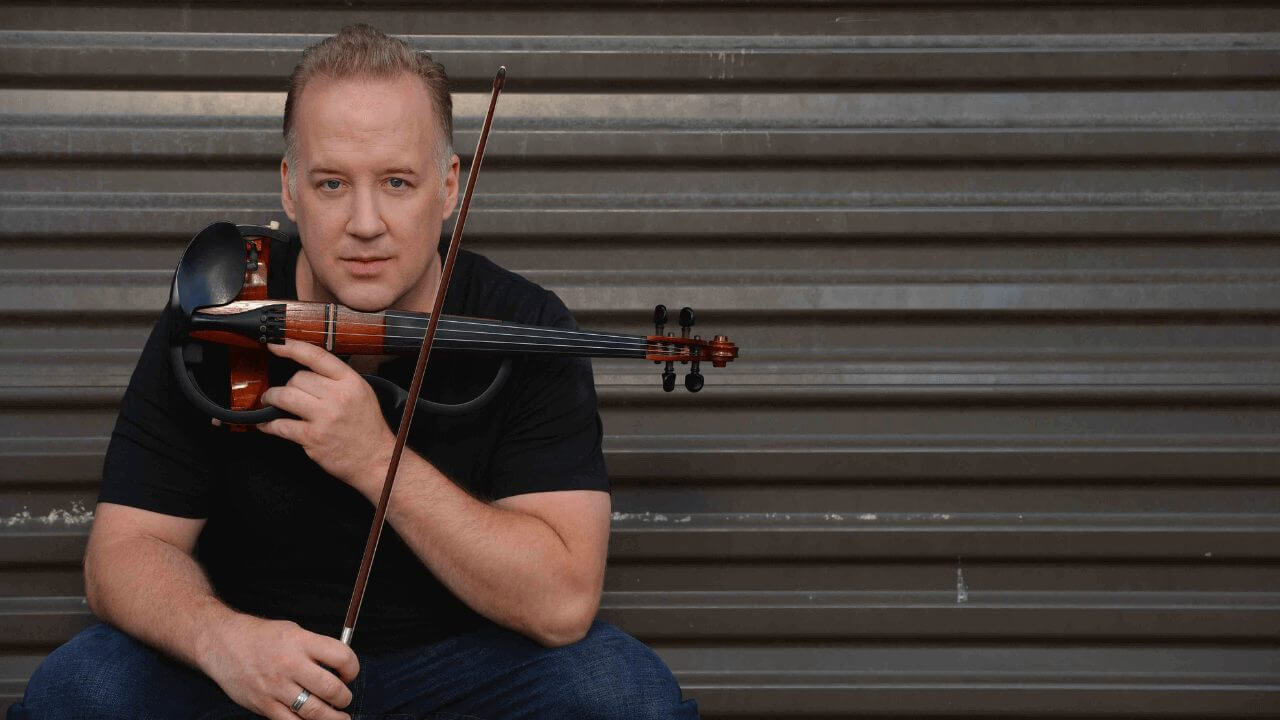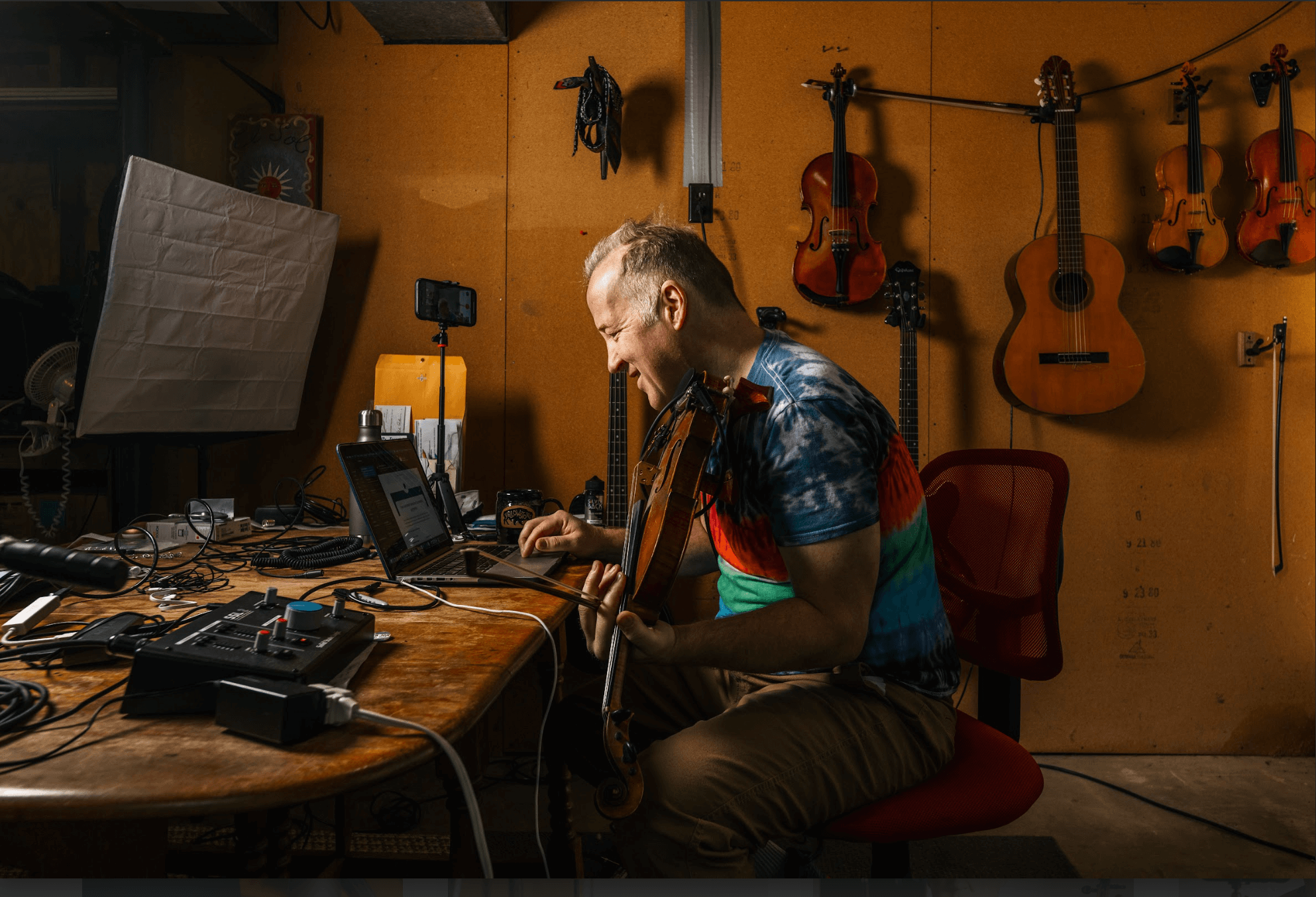Fiddle Bowing Exercises for Fiddle Mastery
Are you looking to take your fiddle playing to the next level? Whether you’re a beginner or an intermediate player, mastering the use of your bow is essential for achieving a rich, expressive sound to set your playing apart. In the play-along video lessons below, we will guide you through exercises designed to help you perfect your bowing hand and enhance your overall playing.
We will cover fundamental exercises you need to know while making it fun and musical. Playing along, you’ll learn how to produce a clean and consistent sound, execute smooth bow changes, and create dynamic variations. By the end of this article, you’ll have a toolkit of exercises to practice regularly, allowing you to take your playing to new heights.
Get ready to upgrade your bowing mentality and make magic with your fiddle!
Developing a Consistent and Even Bow Technique
Creating a consistent and even technique is the foundation for playing clean and clear, whether you like to playfast and aggressive or with slow grace.
One crucial aspect of developing good technique is positioning your bow hold of your bowing hand.
Start by holding the bow with a relaxed grip to achieve the proper hand position. Your thumb should rest on the pad of the bow grip, while your fingers wrap around the bow, lightly touching the bow hair. Avoid gripping the bow too tightly, as it can restrict your bowing motion and hinder your control.
Video: Check Your Bow Hold
Checking your bow hold will be a game changer for your sound and bowing mentality. Your index finger of your bowing hand should rest on top of the bow while the other fingers gently curve around it. This positioning allows for flexibility and control.
Practice long bows on a single string once you have established the correct hand position. Start with slow, deliberate strokes, focusing on maintaining an even pressure on the bow throughout the stroke. Gradually increase the speed and length of the strokes while staying consistent and smooth. This exercise will help you develop muscle memory and control.
Bow Angle: The bow should be perpendicular to the strings, with 100% of the hairs making full contact with them. Avoid tilting the bow too much. Rather than trying to draw a straight line with the bow, focus on keeping all the bow hairs in contact with the strings. This will generally keep your bow in the right place.
Essential Exercises for Improving Bow Control
Improving bow control allows you to execute smooth bow changes, create dynamic variations, and add depth to your playing. Here are some essential exercises to help you develop bow control:
- Bow Distribution Exercise: Start by playing long strokes on a single string, gradually increasing the pressure from the frog to the tip of the bow. Then, reverse the motion, decreasing the pressure from the tip to the frog. Repeat this on each string, paying attention to the weight and balance of the bow throughout.
- String Crossing Exercise: String crossing involves smoothly transitioning from one string to another. To practice this technique, start by playing a simple scale, crossing from one string to the next. Begin slowly and gradually increase the speed as you become more comfortable. Focus on leading the string crossing with your right elbow.
Remember to practice these exercises regularly. Consistent practice will help you build muscle memory.
Common Bowing Issues and How to Address Them
As you progress in your playing, you may encounter some common characteristics and challenges. Here are a few common problems and how to tackle them:
- Scratchy Sound: Scratchiness can result from a few different causes. To address this issue, experiment with pressure and speed variations. Experiment with varying bow angles and pressure to find the sweet spot that produces a clear and smooth sound. Practicing slow, deliberate bow strokes can help you identify and correct any inconsistencies in your technique.
Video: how to get a better sound and avoid bowing noise
2. Lack of Control: If you find it challenging to control the bow or execute smooth bow changes, try practicing string crossing exercises. Practicing bowing dynamics exercises will help you develop control over the bow.
2. Bow Skip- Patience and consistent practice are key to overcoming these bowing issues. Take the time to analyze your technique, and seek guidance from experienced players or instructors.
Incorporating Bowing Techniques into Different Fiddling Styles
Once you have developed a foundation in bowing technique, it’s time to explore how to incorporate these techniques into different fiddling styles. Whether you’re interested in classical, bluegrass fiddling, or classical training on the violin, refined use of the bow will enhance your ability to express yourself and connect with the music. Here are some tips for incorporating your bowing mentality into different musical styles:
- Classical musicians use specific techniques including staccato, legato, and spiccato bowing patterns.
- Bluegrass fiddling includes shuffle patterns like the Nashville shuffle and the double shuffle.
Learn Shuffle Bowings: Play along to This Video
1. The video above with Austin Scelzo contains useful patterns for developing variations and different kind of accents. Practice playing bluegrass tunes with a consistent bowing motion, emphasizing both strong beats and syncopated rhythms.
2.Folk: Folk music on the violin encompasses a wide range of dance music styles and traditions. Experiment with different styles to find where you like to make a real impact. Whether you want to play Irish jigs like Kevin Burke,or sound like Bruce Molsky , Tatiana Hargreaves, and other great old time fiddlers, it’s always helpful to try different shapes and cadences.
Improving Speed and Agility
Here are some exercises to help you improve your speed and agility:
- Detached Bowing Exercise: Detached bowing involves playing separate notes with a clear break between each. Start by playing a simple scale, emphasizing each note with a clean and crisp bow stroke. Gradually increase the speed while maintaining clarity and precision. This exercise will help you develop speed and agility in your bowing hand.
- Double Stops Exercise: Double stops involve playing two strings simultaneously. Practice playing double stops on different intervals, starting with simple intervals like thirds or fourths and gradually progressing to more challenging intervals. Focus on maintaining a consistent bow angle and pressure on both strings.
- Bow Lift and Setting: Bow lift and setting are essential for creating articulation and adding variety to your playing. Practice lifting the bow off the strings between each stroke, briefly separating the notes.
Consistent practice will help you develop the muscle memory and coordination needed for faster and more agile bowing.
Resources for Mastering Shuffle Patterns and more
To further enhance your fiddle bowing practice, there are several resources and tools available that can provide additional guidance and support. Here are a few recommendations:
- Online Tutorials and Lessons: If you like the exercises in the videos on this page, try the Creative Strings Academy.
- Metronome: A metronome helps you maintain a consistent tempo and stay on beat. Practice exercises and songs with a metronome to improve your timing and accuracy. You can also use backing tracks. Experiment with variations of the bow in terms of longer and shorter bows as well as when you slur vs separate and change direction.
- Video Recordings: Recording yourself while practicing is valuable for self-assessment. Watch the recordings and pay attention to any areas that need improvement. Make adjustments and practice the exercises accordingly.
- Jam Sessions and Workshops: Participating in jam sessions, workshops, and fiddle camps can provide opportunities for collaboration, learning, and improvement. Surrounding yourself with like-minded musicians can inspire you to keep going.
Advanced Techniques for Adding Dynamics and Expression
Once you have mastered the fundamentals, you can delve into advanced techniques that will add dynamics and expression, Here are a few advanced arm actions to explore:
- Chopping
- Spiccato: Spiccato is a technique for bouncing or playing off the string. It is commonly used in fast-paced music and requires a relaxed hand and a light bow grip.
Advanced techniques require patience and practice to master. Start slowly and gradually increase the difficulty as you become more comfortable. Feel free to check out extended rhyhmic techniques in the video below.
Conclusion and Final Tips
Mastery is a lifelong journey involving dedication, practice, and a love for the instrument, music, and process. By focusing on developing a consistent and even technique, improving bow control, addressing common bowing issues, and incorporating different musical styles, you can take your playing to new heights.
Practice regularly, starting with the videos on this page. Seek guidance from experienced players or instructors. Record yourself, analyze your technique, and adjust accordingly.
Most importantly, enjoy the process and allow yourself to express your musicality through your fiddle playing. With time, patience, and perseverance, you will unlock your potential.






